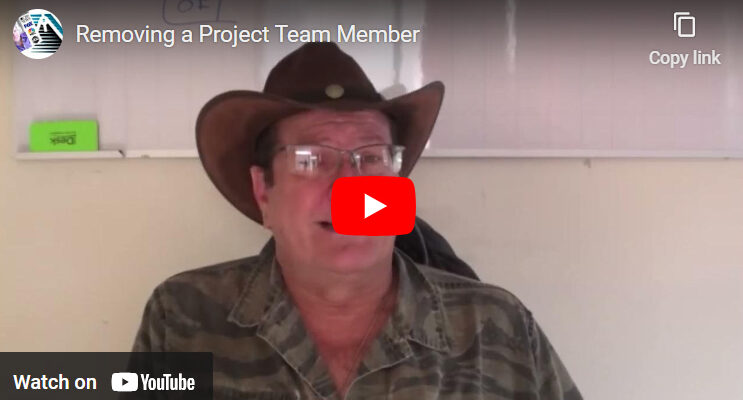Removing a Project Team Member
Effective project management hinges on the successful collaboration of team members. However, if you want to build an A-Team, you may need to cut someone just like any team. In other words, you need to break some eggs to make an omelet.
Knowing when to remove someone from a project team is a difficult yet necessary decision that can significantly affect the project’s outcome. While it’s important to provide support and address issues proactively, there are clear signs that the dude’s got to go. Here are the key considerations that can guide this decision.
Consistent Underperformance
The most obvious sign that someone may need to be removed from a project team is ongoing underperformance. Everyone has a slump, but when a team member consistently fails to pull his weight it drags down the team. Performance issues often lead to other team members picking up the slack, which can cause resentment and disrupt team morale. In short, cut that asshole.
Before taking drastic action, it’s crucial to identify the root cause of underperformance. Is it a skills gap that can be addressed with training, or are there personal issues affecting their productivity? Coach them up if you can, but if they can’t make the cut, bounce them.
Lack of Collaboration or Poor Attitude
Projects thrive on teamwork, and collaboration is essential for ensuring that tasks are completed efficiently. If a team member just doesn’t fit in and poisons the team it is time to go. Toxic and passive-aggressive behavior disrupts cohesion and can quickly demotivate the rest of the team.
These behaviors are often more damaging than poor performance because they can cause lasting harm to the team’s morale. Once it’s clear that the individual is unwilling or unable to change their attitude, it may be necessary to remove them for the sake of the overall team’s health and the success of the project.
Misalignment with Project Goals
Sometimes, a person’s talents, skills, or even values may no longer align with the direction of the project. This misalignment can be a result of changes in project scope, new technological requirements, or evolving business objectives. While the individual may be talented and hardworking, they may not be the right fit for the specific needs of the project.
In such cases, removing the individual from the team is not necessarily a reflection of their abilities but rather a strategic decision to ensure the project stays on course. If possible, it’s best to reposition them in a role or project that is better suited to their strengths.
Repeated Ethical or Professional Violations
Any breach of ethics or professional standards, such as dishonesty, failing to follow legal guidelines, or violating confidentiality agreements, is a serious red flag. Trust is the foundation of any project team, and once it’s broken, it can be difficult to recover. If a team member has committed a violation that compromises the integrity of the project or the organization, removing them is often the only responsible course of action.
Resistance to Feedback or Growth
A healthy team dynamic relies on members who are open to feedback and willing to improve. If a team member consistently resists constructive criticism, refuses to grow, or displays a lack of willingness to learn new skills necessary for the project’s success, it signals a problematic mindset. Team members who remain stuck in their ways and reject change can hinder the progress of the project.
Conclusion
Removing a project team member should always be a last resort, but it’s sometimes necessary to safeguard the success of the project and the well-being of the rest of the team. Consistent underperformance, toxic attitudes, and misalignment with project goals are valid reasons to consider this step. When done with careful consideration and clear communication, removing a problematic team member can create space for more positive, productive dynamics.
Let’s Git-R-Done this week!
About The Author
Cowboy
Bill Volpe (Cowboy) is an international businessman and former Master Business Analyst at Hewlett Packard. He has worked as a US Government contractor under SECRET Clearance and was formerly the PMO Manager for the Ministry of Interior of Saudi Arabia. He has traveled and taught all over the world and is now living in South America.

